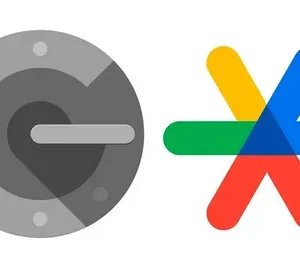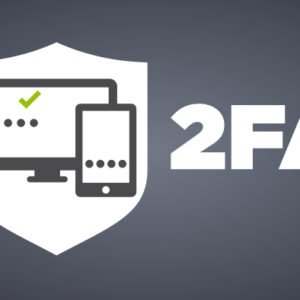Transferring over $100,000 in Bitcoin isn’t just another crypto transaction—it’s a high-stakes move that demands precision, awareness, and a solid strategy. Mistakes can cost you thousands, if not everything. In a landscape filled with rising phishing attempts, exchange vulnerabilities, and fast-moving prices, ensuring that your funds move securely between platforms is non-negotiable.
Whether you’re an institutional investor, crypto whale, or serious retail trader, this guide lays out everything you need to safely transfer large sums of Bitcoin between exchanges. We’ll dive into the best practices, compare wallet options, assess real-time transaction monitoring tools, and reveal expert insights on minimizing risks. Let’s demystify this essential but anxiety-inducing part of crypto life.
Why Transferring Large Amounts of Bitcoin Is Riskier Than You Think
On the surface, sending BTC from one exchange to another seems simple. But transferring $100,000+ in Bitcoin brings in a whole different set of variables:
- Higher Target for Hackers: Large transactions attract more attention from bad actors targeting exchanges and wallets.
- Network Fees Can Spike: On-chain congestion can delay transactions and drive up costs unexpectedly.
- Address Errors Are Costlier: Send BTC to the wrong address? It’s gone. Permanently. There are no undo buttons in crypto.
- Exchange Downtime or Freezes: You may lose arbitrage opportunities if a platform goes down mid-transfer.
- Regulatory Reporting Thresholds: Large transfers might trigger scrutiny or even compliance checks from exchanges.
These risks make it essential to have a structured, secure plan.
Step-by-Step: How to Safely Transfer Bitcoin Between Exchanges
Let’s break down the process into a foolproof series of steps:
1. Verify Both Exchange Accounts Are Fully Verified and Secure
- Enable 2FA (preferably using an authenticator app)
- Confirm identity verification (KYC) is complete
- Double-check withdrawal and deposit limits
- Review exchange reputation via user feedback on Trustpilot or Reddit forums
2. Check Network Congestion and Fees
Use a tracker like mempool.space or Blockchair Bitcoin Fee Estimator to evaluate current fee rates. Delaying your transaction by an hour or two can save hundreds in fees on large amounts.
3. Initiate a Test Transaction First
Always start with a small amount (e.g., $100 or 0.001 BTC) to confirm the receiving address and ensure smooth operation.
4. Use a Cold or Hardware Wallet for Staging (Optional but Recommended)
Before sending a large amount directly from one exchange to another, some prefer routing it through a personal wallet. This step gives you more control and visibility over the transaction.
📅 Pro Tip: Using a cold wallet like Ledger or Trezor can add a crucial security layer.
5. Double and Triple Check the Wallet Address
Clipboard hijacking malware can change copied wallet addresses. Always:
- Visually confirm the pasted address matches
- Use address whitelisting on your exchange
- Consider using QR code scans if supported
6. Use Real-Time Transaction Monitoring Tools
Tools like Blockstream Explorer, BTC.com Explorer, or Whale Alert help you track confirmations and catch stuck transactions.
7. Transfer During Optimal Hours
Avoid weekends and major news days. Network activity tends to spike during volatile market periods, leading to slower confirmations and higher fees.
8. Verify Deposit Confirmation Policy of the Receiving Exchange
Exchanges differ on how many confirmations are needed. Binance, for instance, requires 1 confirmation for Bitcoin, while Coinbase may require 3+ confirmations depending on the activity.
9. Document the Transfer for Tax and Audit Purposes
Large crypto transactions are increasingly subject to regulatory scrutiny. Take screenshots and save TXIDs and timestamps.
Table: Key Differences in Bitcoin Transfer Policies on Top Exchanges (2025)
| Exchange | Bitcoin Confirmation Required | Typical Deposit Time | Withdrawal Fee (BTC) | Notable Security Features |
|---|---|---|---|---|
| Binance | 1 | ~10-20 mins | 0.0002 BTC | Address whitelisting, anti-phishing codes |
| Coinbase | 3 | ~30-60 mins | 0.0005 BTC | Vault storage, multi-sig wallets |
| Kraken | 3 | ~30 mins | 0.00015 BTC | Global settings lock, YubiKey support |
| KuCoin | 1 | ~10-15 mins | 0.0004 BTC | Trading password, IP whitelisting |
Cold Wallets vs Exchange-to-Exchange Transfers: Which is Safer?
| Factor | Exchange-to-Exchange | Via Cold Wallet (e.g., Ledger) |
|---|---|---|
| Speed | Faster | Slightly slower |
| Security Control | Lower (exchange-based) | Higher (user-controlled) |
| Monitoring Ease | Moderate | High |
| Ideal For | Day traders, arbitrage | Long-term holders, high-risk environments |
Verdict: If you value maximum control and aren’t in a rush, routing through a cold wallet adds security.
Common Mistakes When Moving Large Sums of Bitcoin
Avoid these rookie errors that have cost people millions:
- Copy-paste Fails: Always double-check copied wallet addresses.
- Skipping Test Transfers: Saving time is not worth losing funds.
- Sending During Congested Hours: You risk high fees and delays.
- Ignoring Exchange Policies: Always read the deposit confirmation rules.
- Using Public Wi-Fi: Never initiate transfers on unsecured networks.
Tools to Secure Large Bitcoin Transfers
- BitGo: Enterprise-grade wallet solution for large holders
- Chainalysis KYT: Risk management tool for institutions
- CryptoCompare: Real-time network analytics and fee insights
- BlockCypher: Blockchain monitoring API
Insight: When It Makes Sense to Use OTC Desks Instead
If you’re moving amounts significantly above $100,000 (e.g., $500K+), consider using OTC trading desks. These reduce slippage, avoid network congestion, and provide higher privacy.
Popular options:
Final Thoughts: Minimize Emotion, Maximize Precision
Transferring large amounts of Bitcoin isn’t a routine task—it’s a calculated operation. The stakes are too high to cut corners. By understanding the risks, applying layered security, using monitoring tools, and preparing for worst-case scenarios, you can move your BTC across exchanges without losing a dime.
Keep in mind that technology changes fast. Bookmark this page and revisit before each large transfer to ensure you’re following the latest best practices.
Happy (and safe) transferring!






